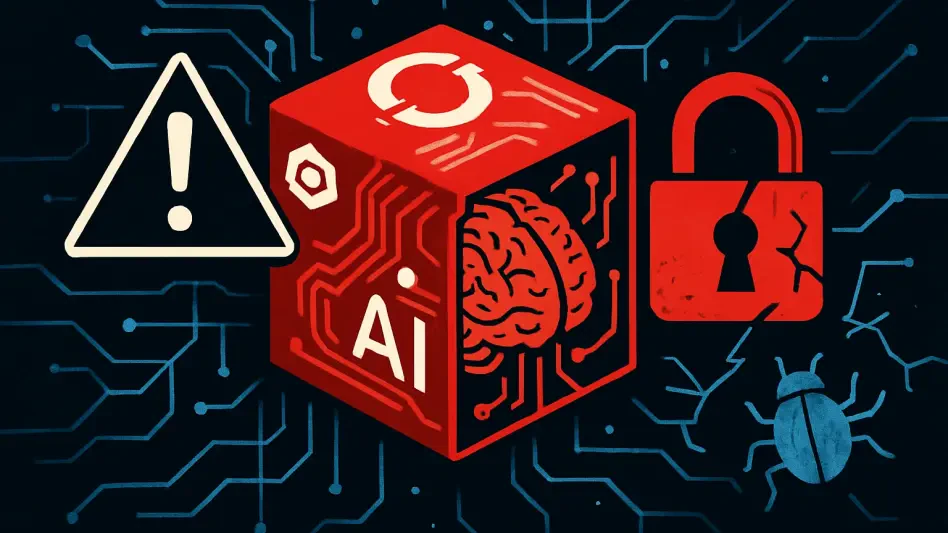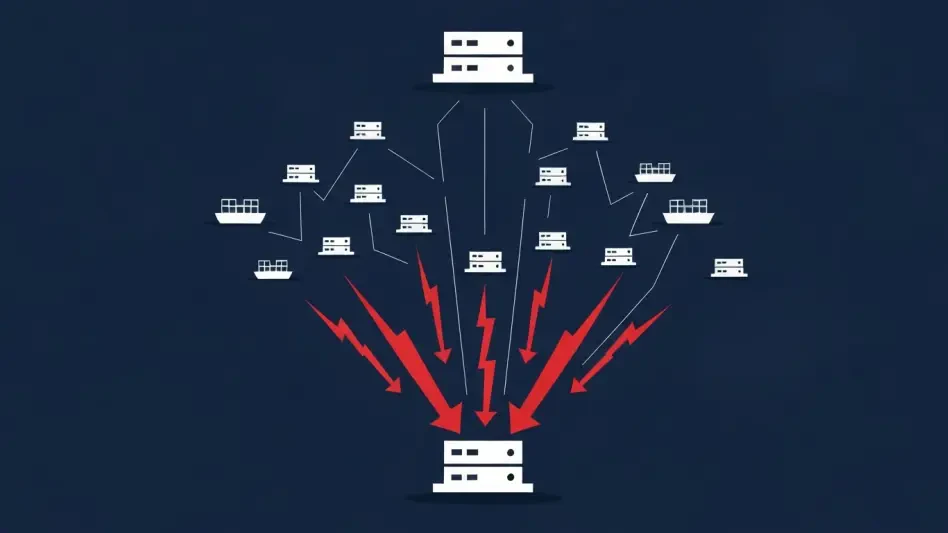What happens when a trusted AI platform, designed to empower innovation, becomes a gateway for catastrophic breaches? In a world increasingly reliant on artificial intelligence, a severe vulnerability in Red Hat’s OpenShift AI Service, disclosed on September 28, has sent shockwaves through the tech community, earning a near-perfect severity score of 9.9 as CVE-2025-10725. This flaw could transform a low-privileged user into a full cluster administrator, unlocking access to sensitive data and critical infrastructure. This hidden danger raises urgent questions about the security of AI-driven systems that power modern enterprises.
The significance of this issue cannot be overstated. OpenShift AI is a cornerstone for organizations building and deploying machine learning models, offering a seamless environment for experimentation and innovation. However, the discovery of a privilege escalation flaw reveals a stark reality: even cutting-edge platforms are not immune to critical vulnerabilities. As cyber threats grow in sophistication, understanding and addressing such risks becomes paramount to protecting digital ecosystems. This story delves into the mechanics of the flaw, expert perspectives, and actionable steps to safeguard systems against potential disasters.
Unpacking a Hidden Danger in AI Platforms
At the heart of this issue lies a vulnerability that could turn a seemingly harmless user account into a master key for an entire system. Identified as CVE-2025-10725, this flaw in OpenShift AI allows a low-privileged individual—perhaps a data scientist working in a Jupyter notebook—to bypass security measures and gain cluster administrator status. Such access could enable the theft of proprietary models, disruption of services, or even control over the underlying infrastructure, posing a grave risk to organizations.
The severity of this threat is amplified by the platform’s widespread adoption in industries ranging from finance to healthcare. A single breach could compromise not just one company, but entire supply chains or customer bases relying on shared AI resources. The near-perfect severity score of 9.9 highlights the ease with which this flaw can be exploited, especially in environments lacking robust access controls or timely updates, making it a pressing concern for security teams worldwide.
The Stakes of OpenShift AI’s Security Gap
In today’s digital landscape, AI platforms like OpenShift AI are more than tools—they are strategic assets driving business decisions and research breakthroughs. Yet, this vulnerability underscores a critical paradox: the more powerful the technology, the greater the potential fallout from a security lapse. Privilege escalation in such systems doesn’t merely mean unauthorized access; it can result in data breaches, service interruptions, and loss of trust from stakeholders.
Consider the broader implications in an era where cyberattacks are increasing at an alarming rate. According to recent industry reports, over 60% of organizations experienced a data breach due to misconfigured access controls in the past two years. When a flaw like this emerges in a platform integral to machine learning operations, the ripple effects could undermine confidence in AI adoption, slowing innovation and exposing vulnerabilities across interconnected systems.
Breaking Down the Exploit Path
Understanding how this privilege escalation occurs reveals the alarming simplicity of the exploit. The flaw originates from a gap in access control within OpenShift AI, allowing a user with minimal permissions to manipulate settings tied to job creation. By exploiting this weakness, an attacker can elevate their status step by step, eventually gaining unrestricted access as a cluster administrator, capable of altering configurations or extracting sensitive information.
The potential impact is not hypothetical. Imagine a malicious actor disrupting hosted applications critical to a company’s operations or stealing proprietary AI models worth millions in intellectual property. Environments with outdated patches or overly permissive settings are particularly vulnerable, as the high severity score indicates minimal barriers to exploitation. This flaw serves as a stark reminder that even small oversights in AI/ML pipelines can cascade into organization-wide crises if left unaddressed.
Voices from the Field: AI Security Under Scrutiny
Industry experts have sounded the alarm on the broader implications of this vulnerability, urging immediate action. John Carberry of Xcape, Inc. emphasized the deceptive nature of such flaws, stating, “Even minor glitches in AI/ML pipelines can spiral into devastating breaches if exploited with precision.” His call for swift patch application resonates with administrators managing mission-critical systems.
Graham Neray from Oso highlighted a troubling trend, noting, “Broken access control remains the top application security failure per the OWASP Top 10, and AI’s dynamic nature only magnifies the attack surface.” Meanwhile, Agnidipta Sarkar of ColorTokens pointed to specific risks in tools like Jupyter notebooks, often used in research settings, warning that “weak multi-factor authentication and stolen credentials make them easy entry points for attackers to hijack clusters or deploy malicious pods.” These perspectives collectively paint a sobering picture of an evolving threat landscape targeting AI platforms.
Their insights underscore a critical point: the OpenShift AI flaw is not an isolated incident but part of a systemic challenge in securing complex, automated systems. As attackers grow more adept at chaining vulnerabilities, the need for robust, proactive defenses becomes non-negotiable. These expert voices serve as a wake-up call for organizations to reassess their security posture in light of emerging risks.
Safeguarding OpenShift AI: Steps to Mitigate Risk
Addressing this privilege escalation threat requires a strategic, multi-faceted approach to harden OpenShift AI environments. A fundamental step is enforcing the principle of least privilege, as recommended by Red Hat. Permissions for job creation should be granted only to specific users or groups on a need-to-know basis, preventing broad access that could be exploited by malicious actors.
Beyond permissions, applying patches and mitigations without delay is essential, even if the flaw isn’t deemed critical in isolation. Regular audits of infrastructure can also uncover unauthorized or “shadow” deployments of OpenShift AI that might harbor unpatched vulnerabilities. Integrating fine-grained authorization frameworks from the design phase adds another layer of defense, ensuring that sensitive data and systems remain secure against potential breaches.
Additionally, organizations should prioritize training for teams to recognize and respond to security risks in AI/ML workflows. Simulated attack scenarios can help identify weak points before they are exploited in real-world conditions. By adopting these measures, companies can significantly reduce the likelihood of a low-privileged user escalating to catastrophic levels of control, preserving the integrity of their digital operations.
Reflecting on a Critical Wake-Up Call
Looking back, the discovery of the OpenShift AI vulnerability served as a pivotal moment for the tech industry, highlighting the fragility of even the most advanced platforms. It exposed how a single flaw could jeopardize entire infrastructures, forcing organizations to confront gaps in their security practices. The incident became a catalyst for reevaluating how AI systems were designed and protected against evolving threats.
Moving forward, the path was clear: security teams needed to prioritize granular access controls and maintain vigilance through consistent updates and audits. Collaboration between platform providers, cybersecurity experts, and end-users emerged as a vital strategy to anticipate and neutralize risks before they escalated. This event underscored that safeguarding AI’s potential demanded not just technical solutions, but a cultural shift toward proactive, relentless defense in an increasingly interconnected digital world.








